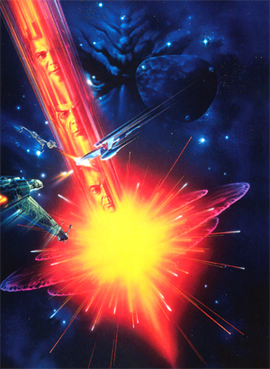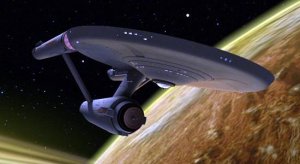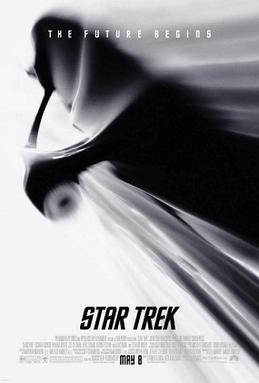
James Francis Cameron is a Canadian filmmaker. He is a major figure in the post-New Hollywood era. He often uses novel technologies with a classical filmmaking style. He first gained recognition for writing and directing The Terminator (1984) and found further success with Aliens (1986), The Abyss (1989), Terminator 2: Judgment Day (1991), True Lies (1994), as well as Avatar (2009) and its sequels. He directed, wrote, co-produced, and co-edited Titanic (1997), winning three Academy Awards for Best Picture, Best Director, and Best Film Editing. He is a recipient of various other industry accolades, and three of his films have been selected for preservation in the National Film Registry by the Library of Congress.

Star Trek Generations is a 1994 American science fiction film and the seventh film in the Star Trek film series. Malcolm McDowell joins cast members from the 1960s television show Star Trek and the 1987 sequel series The Next Generation, including William Shatner and Patrick Stewart. In the film, Captain Jean-Luc Picard of the USS Enterprise-D joins forces with Captain James T. Kirk to stop the villain Tolian Soran from destroying a planetary system in his attempt to return to an extra-dimensional realm known as the Nexus.

Star Trek II: The Wrath of Khan is a 1982 American science fiction film directed by Nicholas Meyer and based on the television series Star Trek. It is the second film in the Star Trek film series following Star Trek: The Motion Picture (1979), and is a sequel to the television episode "Space Seed" (1967). The plot features Admiral James T. Kirk and the crew of the starship USS Enterprise facing off against the genetically engineered tyrant Khan Noonien Singh. When Khan escapes from a 15-year exile to exact revenge on Kirk, the crew of the Enterprise must stop him from acquiring a powerful terraforming device named Genesis. The film is the beginning of a three-film story arc that continues with the film Star Trek III: The Search for Spock (1984) and concludes with the film Star Trek IV: The Voyage Home (1986).

Spock is a fictional character in the Star Trek media franchise. He first appeared in the original Star Trek series serving aboard the starship USS Enterprise as science officer and first officer and later as commanding officer of the vessel. Spock's mixed human–Vulcan heritage serves as an important plot element in many of the character's appearances. Along with Captain James T. Kirk and Dr. Leonard "Bones" McCoy, he is one of the three central characters in the original Star Trek series and its films. After retiring from active duty in Starfleet, Spock served as a Federation ambassador, and later became involved in the ill-fated attempt to save Romulus from a supernova, leading him to live out the rest of his life in a parallel universe.

Star Trek IV: The Voyage Home is a 1986 American science fiction film, the fourth installment in the Star Trek film franchise based on the television series Star Trek. The second film directed by Leonard Nimoy, it completes the story arc begun in Star Trek II: The Wrath of Khan (1982), and continued in Star Trek III: The Search for Spock (1984). Intent on returning home to Earth to face trial for their actions in the previous film, the former crew of the USS Enterprise finds the planet in grave danger from an alien probe attempting to contact now-extinct humpback whales. The crew travel to Earth's past to find whales who can answer the probe's call.

Star Trek V: The Final Frontier is a 1989 American science fiction film directed by William Shatner and based on the television series Star Trek created by Gene Roddenberry. It is the fifth installment in the Star Trek film series, and takes place shortly after the events of Star Trek IV: The Voyage Home (1986). Its plot follows the crew of the USS Enterprise-A as they confront renegade Vulcan Sybok, who is searching for God at the center of the galaxy.

Time After Time is a 1979 American science fiction film written and directed by Nicholas Meyer and starring Malcolm McDowell, David Warner, and Mary Steenburgen. Filmed in Panavision, it was the directing debut of Meyer, whose screenplay is based on the premise from Karl Alexander's novel Time After Time and a story by Alexander and Steve Hayes. The film presents a story in which British author H. G. Wells uses his time machine to pursue Jack the Ripper into the 20th century.

Star Trek VI: The Undiscovered Country is a 1991 American science fiction film directed by Nicholas Meyer, who directed the second Star Trek film, The Wrath of Khan. It is the sixth feature film based on the 1966–1969 Star Trek television series. Taking place after the events of Star Trek V: The Final Frontier, it is the final film featuring the entire main cast of the original television series. The destruction of the Klingon moon Praxis leads the Klingon Empire to pursue peace with their longtime adversary, the Federation; the crew of the Federation starship USS Enterprise must race against unseen conspirators with a militaristic agenda.

Harve Bennett was an American television and film producer and screenwriter.

Nicholas Meyer is an American screenwriter, director and author known for his best-selling novel The Seven-Per-Cent Solution, and for directing the films Time After Time, two of the Star Trek feature films, the 1983 television film The Day After, and the 1999 HBO original film Vendetta.

James Roy Horner was an American film composer. He worked on over 160 film and television productions between 1978 and 2015. He was known for the integration of choral and electronic elements alongside traditional orchestrations, and for his use of motifs associated with Celtic music.

USS Enterprise (NCC-1701) is a starship in the Star Trek media franchise. It is the main setting of the original Star Trek television series (1966–69), and it is depicted in films, other television series, spin-off fiction, products, and fan-created media. Under the command of Captain James T. Kirk, the Enterprise carries its crew on a mission "to explore strange, new worlds; to seek out new life and new civilizations; to boldly go where no man has gone before." Star Trek: Strange New Worlds (2022–present) depicts the Enterprise under the command of Kirk's predecessor, Captain Christopher Pike.
Ralph Frederick Winter is an American film producer who has helped to produce blockbuster movies such as the X-Men, Fantastic Four and Star Trek series as well as I, Robot and Planet of the Apes. His films have grossed collectively over $2 billion (USD).

Star Trek is a 2009 American science fiction action film directed by J. J. Abrams and written by Roberto Orci and Alex Kurtzman. It is the 11th film in the Star Trek franchise, and is also a reboot that features the main characters of the original Star Trek television series portrayed by a new cast, as the first in the rebooted film series. The film follows James T. Kirk and Spock aboard the USS Enterprise as they combat Nero, a Romulan from their future who threatens the United Federation of Planets. The story takes place in an alternate reality that features both an alternate birth location for James T. Kirk and further alterations in history stemming from the time travel of both Nero and the original series Spock. The alternate reality was created in an attempt to free the film and the franchise from established continuity constraints while simultaneously preserving original story elements.
Herbert Franklin Solow was an American motion picture and television executive, screenwriter, motion picture and television producer, director and talent agent.
Greg Jein was a Chinese American model designer who created miniatures for use in the special effects portions of many films and television series, beginning in the 1970s. Jein was nominated for an Academy Award for Best Visual Effects for his work on the films Close Encounters of the Third Kind (1977) and 1941 (1979), and also nominated for an Outstanding Special Visual Effects Emmy for his work on Angels in America.

The development of Spock, a fictional character first introduced in the American science fiction television series Star Trek, began prior to the start of the series. The first known mention of Spock was in a discussion between Gene Roddenberry and Gary Lockwood, where the latter suggested Leonard Nimoy for the role. Roddenberry agreed with the suggestion, and Nimoy became the first choice actor for the part. However, Roddenberry was required to audition other actors for the role. It was offered to both DeForest Kelley and Martin Landau before Nimoy. Nimoy disliked the prosthetic ears he was required to wear, and there were concerns from the studio that they made him appear satanic. Roddenberry fought to keep the character in the second pilot, "Where No Man Has Gone Before" after the rest of the main cast was dropped from the initial pilot, "The Cage".
Star Trek 4 is the working title of an American science fiction film in development at Paramount Pictures based on the television series Star Trek by Gene Roddenberry. It is intended to be the 15th feature film in the Star Trek film franchise and the 5th of the franchise's reboot films. There have been several different iterations of the film in development since 2015.













